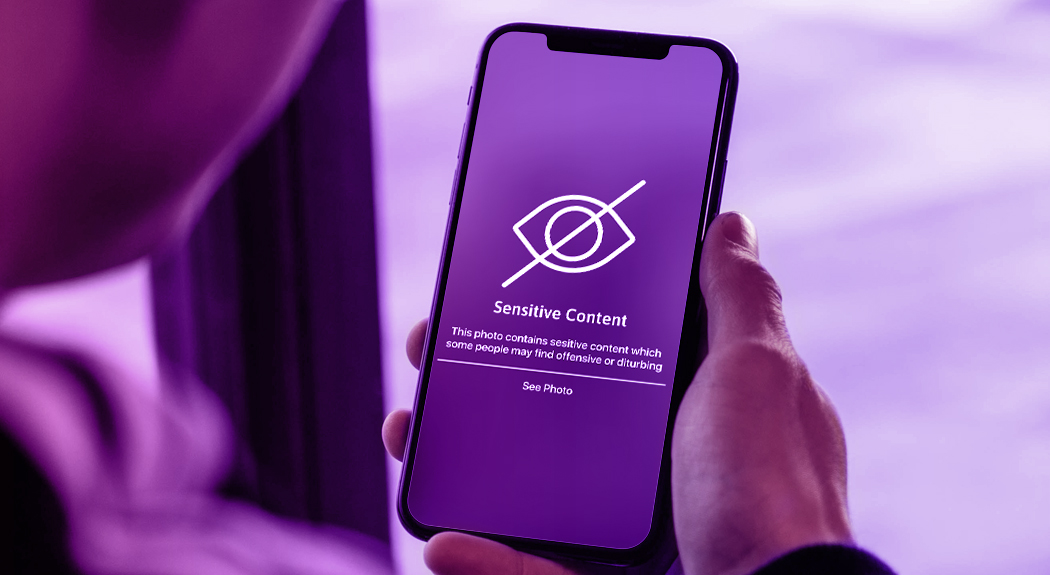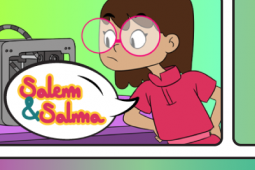I want to be aware of the impact of computer-generated graphics on my children
Dealing with Sensitive Media When Online

What is sensitive media?
In recent decades, criminal activity -in its different manifestations- has increased over time and in the previous decade, hate crimes and violent acts have also increased. For instance, the 2019 mass shooting in New Zealand resulted in the death of 51 people after the attempt to kill more than 40 people. While there can potentially be several underlying reasons that explain these unfortunate incidences, one prominent factor that both enables and facilitates such events is the overexposure of the youth to sensitive media.
The term “sensitive media” has no one fixed or established meaning. Although what users or regulators understand as sensitive is fluid and evolves with the society’s dynamics, violent extremism, adult images/videos, and hateful content are some of the most common and conventionally understood examples of sensitive media that one should be aware of. Twitter, for example, clearly states all types of media which are not allowed on its platform. For instance, it will take down images or videos showing “serious physical harm, including visible wounds,” or “hateful symbols or references.”
Based on the above, is sensitive media considered a growing problem?
Among other ways, social media is one of the dominant channels through which sensitive material is circulated these days. This has come about due to enhanced exposure to social media, which has astronomically increased over the past decade. At the same time, the population has become more tech literate. This provided an optimal environment where individuals bond to their gadgets and spend more time on social media outlets like Instagram, Snapchat, etc. This proximity is enhanced during periods like the COVID-19 pandemic, where people prefer to stay at home than go outside. While the content we see on television is rated and usually comes with an advisory statement, content over social media websites is largely unregulated. This means that anyone can share or upload any media without any restriction while reaching out to a large number of people at the same time. Therefore, it becomes imperative that individuals, especially the youth, acknowledge and identify sensitive content and act responsibly when they see it.
Why should we be aware of the spread of sensitive media? How can it affect me as a responsible digital citizen?
An unfettered exposure to sensitive media triggers many unwanted and negative consequences on the mental and (potentially) physical health of the individual. Gore images, showing blood and bodily harm, can trigger distress and scar the impressionable mind of a person, especially those in the younger age brackets. Imagine the case of a dog-loving 5-year old child who accidentally watches a picture of a mutilated dog corpse. Quite understandably, that child cannot easily escape that memory. Research has shown that exposure to content involving physical abuse and harm can permanently introduce a deep-rooted fear of blood and make children timider.
Exposure to sensitive media can come through seemingly unharmful sources as well. Playing video games and watching television and movies are some of the potential ways to desensitize youthful minds to physical harm and assault. For example, an action film that is revered and admired by teenagers implicitly develops a liking for physical aggression which, for instance, a 15-year-old boy would then practice on someone else in the school. Similarly, popular computer games like Grand Theft Auto (GTA) and Call of Duty provide a platform where teenagers can simulate aggression and violence. Although there are no apparent immediate consequences for playing an ‘exciting’ computer game, it incentivizes and promotes behavior that can have real consequences in their lives e.g., getting expelled from school or college. Even in the long-term, many scientific studies have shown that such experiences accumulate over time and turn children into more psychologically unstable and hostile adults, lacking compassion and love towards fellow human beings.
Similarly, sharing posts or pictures which target one particular group of people or incites hate towards a community will contribute to an overall toxic environment. When a high-school kid reads a slur posted on Facebook against a person belonging to a community, they will subconsciously develop a disliking and apathy towards that community. Although sharing one or two controversial posts may seem harmless at one point, from a sociological perspective, it weakens the foundations of a society wherein people can tolerate and celebrate differences. It fuels hatred towards certain people, which, through many iterations, culminates into events like the mass shooting in New Zealand discussed above. This hate speech fuels an us-vs-them mindset that implants bias in young children, which they then carry with themselves throughout their lives. Over the long run, this attitude inhibits friendships and learning that come through associations across different cultures. Moreover, carelessly sharing videos of forced sensitive l encounters desensitizes the youth to the acts that, directly or indirectly, damage the sense of dignity of the victim and may land the user in legal troubles.
How can I help in spreading awareness about this topic and how can I be a responsible digital citizen?
Recognizing sensitive content and managing it dutifully should be the significant guidelines when accessing and using social media. Many hate groups and those who blackmail people based on their compromising content disseminate information through social media. Simple precautionary steps, thus, can save the user (and the broader community) from many unintended consequences.
One of the more basic ways to help spread awareness about sensitive media is by acting responsibly in one’s own capacity (i.e., self-regulation). Whenever sharing any content, one should definitely fact-check the claims and inform others about any discrepancy. Any dubious or incorrect information can be reported to the authorities or, at the very least, blocked. Twitter and Facebook, for instance, allow their users to report sensitive content which will be confirmed by their moderators. They also allow users to enable filters (based on their preferences) that prevent such material from showing up in the first place. Moreover, third-party add-ons like Block Together can make sharable user-specified lists of Twitter accounts that spread sensitive media and reduce the burden of blocking such profiles. Hence, the effort can be as fundamental as not sharing any image or post which is likely to cause mental pain or as active as reporting/blocking objectionable content on social media platforms.
It is essential to understand that only collective efforts--from many conscientious individuals--can help diminish the circulation and the impact of sensitive media. Consequently, it is imperative to educate your more receptive friends on safe social media practices as well. It is likely that your friends from the same age group relate to your thought process and adopt your habits; therefore, conversing with friends of your age can be one of the most effective mediums of spreading awareness through peer effects. A much more pro-active contribution, besides, would be to take part in different media literacy programs and initiatives that help others identify and react to hateful or violent content.
To conclude, sensitive media can be thought of as any material which triggers mental trauma or distress or promotes hatred towards some group. In the recent age, more people spend a lot of time on social networking sites which amplifies the role sensitive media plays in our lives. As a rule-of-thumb, we can inhibit the dissemination of such content by, first, not sharing it yourself and, then, educating others on its detrimental short and long-term effects.
@2x.png)


















